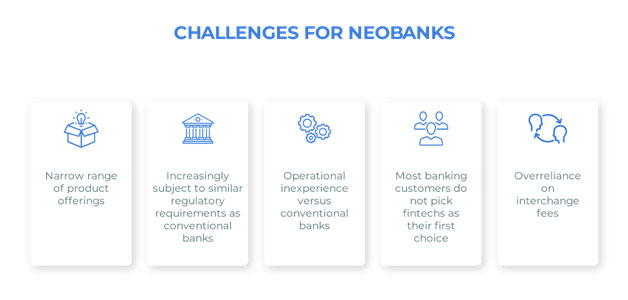
Insurance partnerships with neobanks yield benefits for both insurers and insurtech firms, but concerns over their sustainability linger.
Virtual banking is ubiquitous these days, and among the many players leading the digital charge are “neobanks”. Operating exclusively on easy-to-use online platforms, these challengers are shaking up the banking industry with their leaner business model and lower fees.
Yet, the neobanking wave seems to be coming to a head. The pandemic growth spurt that initially spurred neobanks to new heights has fizzled out, and regulatory pressures have diminished growth prospects in promising markets.
In search of new growth opportunities, neobanks in Asia are exploring insurance tie-ups. Insurers are hesitant: how do neobanks fit into the insurance ecosystem, and how will an insurance partnership with one pan out?
To answer those questions, start with what neobanks bring to the table first.
Essentially, neobanks are entirely digital banks that often operate via a proprietary online platform like a website, mobile app, or both. Service offerings, like credit lines, moneylending, and foreign transfers, are often tailored to meet the needs of specific customer segments.
Definitions differ widely, but neobanks typically are typically less regulated. Many often collaborate with smaller, regional lenders, and most offer a slimmer range of services compared to their brick-and-mortar peers.
Neobanks are often used interchangeably with online or digital banks, but that’s not entirely accurate. A key distinction: traditional banks and online banks deal with credit, while neobanks are, at their core, payment institutions.
Differences between Traditional, Online and Neobank
| Traditional bank | Online bank | Neobank | |
| Type | Credit institution | Credit institution | Payment institution (some exceptions) |
| Available services | Most comprehensive. Opening an account requires at least basic checks. | Diversified but less comprehensive. Opening an account is subject to more stringent checks | Reduced, sometimes single-service. Opening an account often requires no conditions. |
| Contacting the bank | Dedicated banking advisers in-branch or online | Remote banking advisers | Customer services with limited availability |
| Fees | Most expensive | Less expensive | Least expensive |
| Security | Guaranteed, subject to controls | Guaranteed, subject to controls | Guaranteed only if neobank has secured a banking license. |
Source: MyLife
Neobanks are also a class apart from money apps. While apps like Google Pay and Apple Pay are great for sending money to friends and family, they don’t offer digital payments and small-medium business lending services like Aspire or Revolut.
By extension, neobanks are not the same as e-wallets. Deposits in e-wallets are neither insured nor interest-bearing, and unlike neobanks, e-wallets also do not provide lending or ATM services.
In Asia, neobanks have seen mixed fortunes. Industry players in China grapple with the fallout from the ongoing regulatory crackdown, while Indian venture capital funding into the sector has plummeted more than 60% last year despite a surge in overall fintech funding.
In Southeast Asia however, neobanks are likely to perform better. One estimate expects the regional market – of which 73% of the population remains unbanked – to balloon almost 50% this year. In the Philippines alone, neobanks look set to extend financial services to more than 50 million people by 2025.
(comparison table between Aspire, YouTrip, Wise and Revolut)
| Target customer | Services | |
| Aspire | Small-medium businesses and startups | Business finance and expense tracking |
| Wise | Individual users and businesses | International money transfers and payments |
| YouTrip | Individual users | Multi-currency wallet |
| Revolut | Individual users | Multi-currency wallet and transfers |
Source: Aspire
Key players in Southeast Asia include Singapore-based Aspire and YouTrip, as well as British fintech firms Wise and Revolut. Other players making headway in the region include AirAsia’s BigPay and Octo, CIMB Bank’s all-digital bank in the Philippines.
With the exception of Singapore and Malaysia, Southeast Asian countries not only have a large unbanked population, but also more youthful economies. With Southeast Asia currently boasting the world’s second highest mobile connections to total population ratio, neobanks in the region can also expect to leverage on increasing smartphone penetration levels,
As regulatory and competitive pressures ramp up, neobanks are looking to diversify their offerings. Revolut, for example, has since expanded beyond cards and multi-currency accounts to also include services like stock and cryptocurrency trading.
Some players have sought out insurance partnerships with insurers and insurtech firms instead. In Germany, N26, a digital bank, collaborated with local neo-insurer Simplesurance to offer subscription bundles for smartphone and travel insurance. N26 walked away with a broadened service offering, while Simplesurance was able to offer insurance products and services to N26’s users, significantly lowering customer acquisition costs.
Neobank-insurer partnerships also find success when either firm is looking to rapidly expand to new markets. Earlier this year, Revolut’s collaboration with Qover allowed Revolut to leverage Qover international footprint and swiftly roll out the program to 32 countries.
It’s easy to see why an insurance partnership with neobanks is desirable. Rising insurtech firms can rapidly build volume and sustain operational costs, insurers can easily boost digital sales , and neobanks can quickly expand coverage to new customer segments and geographies.
Naturally, insurance partnerships with neobanks also differ widely, depending on whether the partnership is with an insurer or insurtech firm.
Selective partnerships can be forged over a specific customer segment, geography or product, while more nimble insurtech firms can speed up time to implementation with their API-based integrations.
Some insurers and insurtech firms are also introducing solutions based on alternative data which may complement the needs of neobanks when conducting Know-Your-Customer (KYC) checks or other verification processes.
Opportunities for insurance partnerships with neobanks abound, but it’s not all smooth-sailing ahead.
One hurdle on the horizon may be regulatory risk. Currently, most neobanks worldwide are not subject to stringent regulations that regular banks face. Neobanks are often not required to hold a banking license and can opt to partner with licensed banks or tap on alternate licenses to provide similar products.

Source: PwC, The Economist , Sydney Morning Herald
As scrutiny over the sector increases, neobanks may have to comply to similar banking regulations in future. In Australia for example, local regulators tightened regulations after two neobanks abruptly exited less than two years after gaining their permits. Singapore’s Digital Banking Licensing Scheme also has high barriers to entry, which deters smaller neobanks from applying for a license.
A boost from Covid-19 aside, neobanks have also largely struggled to make a profit in an increasingly saturated market. Unable to shake off their overreliance on card interchange fees, many in the industry also have to contend with powerful new entrants like Google and Walmart.
In essence, there’s virtue in an insurance partnership with a neobank. How neobanks perform in the longer run – especially post Covid-19 – will decide whether these partnerships yield sustainable benefits.